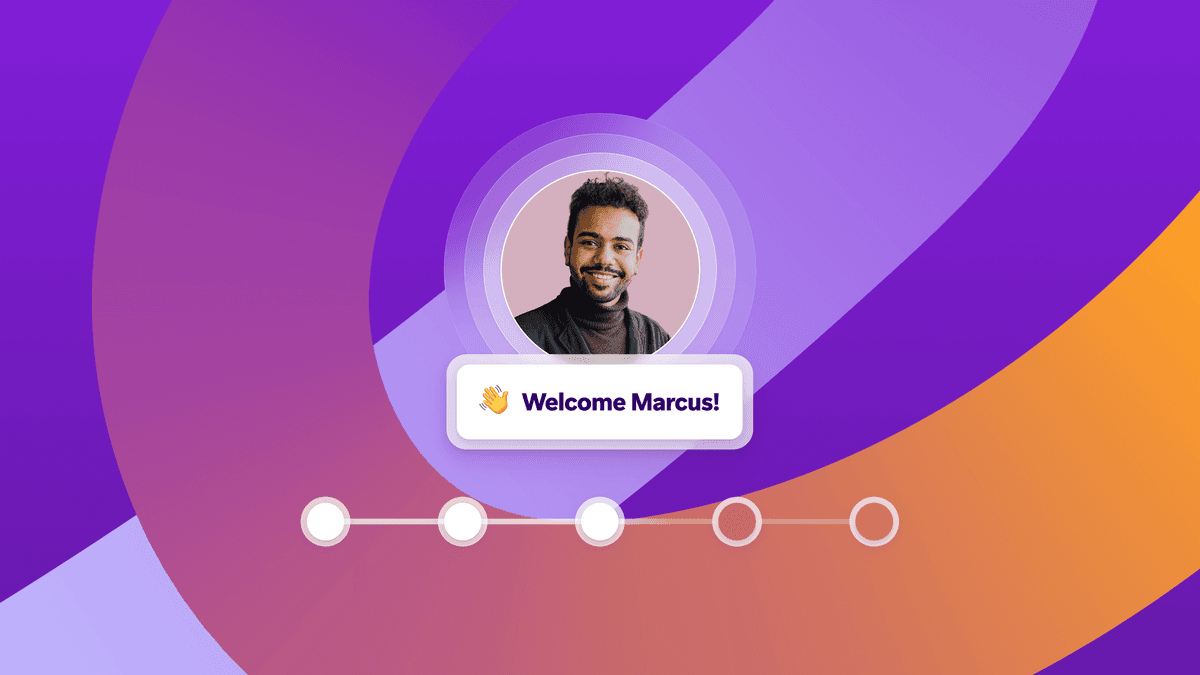What I Learned About Product Design While Interning at Braze
Published on January 26, 2022/Last edited on January 26, 2022/6 min read

DY Lee
I won’t lie—one of my early misconceptions about designers was that they all wore black turtlenecks with clear glasses and sipped on espressos at trendy cafes. While I can’t say if this perception was influenced by an observation on a Saturday morning in New York City, thankfully my understanding of both designers and design has evolved quite a bit since then.
As someone who recently changed careers, being selected for a product design internship at Braze gave me the opportunity to gain firsthand experience and insight into what being a product designer at a software company is really like. During my time at Braze, I had the opportunity to help design a feature for customers and saw the behind-the-scenes of how a product is built and engineered. Now, with my internship coming to an end, I wanted to take the opportunity to share some thoughts on the experience and what I learned.
1. PDE
What does PDE mean? Well, it stands for Product, Design, and Engineering (PDE). This acronym, which I learned during my time at Braze, was instrumental in helping me conceptualize how Product Managers, Designers, and Engineers work together to build a product. At Braze, each product focus area (e.g. email, SMS, reporting) is overseen by cross-functional product-focused teams that are made up of an engineering manager, product manager, and a number of engineers, product designers, and site reliability engineers (SREs). This approach keeps product design and implementation from being stuck in silos and helps to ensure that the work lifecycle is centered around these three disciplines working together in an agile way.
What does this look like in practice? At Braze, I got to collaborate with a product manager, designer, and several engineers as they sketched out early ideas. This exercise served to identify technical constraints and potential blockers associated with a proposed feature, while also assessing what was possible in the moment and what impact the feature would have on the Braze product vision as a whole.
But while the PDE dynamic is a core part of how Braze operates, design doesn’t stop there when it comes to soliciting insights and input. Personally, I relied heavily on insights that were shared with me by the Product, Sales, Solutions Consulting, and Customer Success teams when I gathered initial feedback on the concepts I’d worked on, allowing me to more fully understand their perspectives right from the start. In addition, we made a point of testing concepts with customers, allowing us to gather their valuable feedback and use it to shape the direction of our designs.
To me, these experiences demonstrated just how important cross-functional teamwork is to successful design work. It really is a collaborative effort, one that involves multiple teams and customers to achieve its full potential.
2. Data
For human beings, biases and assumptions can be hard to avoid. That’s why it’s so important to leverage data to help guide and validate design decisions. Plus, data can play a central role in helping teams to measure the impact of their designs and highlight areas for improvement.
There are a lot of ways to use technology to gather information, and this opens up a wide variety of possible channels for data, adding potential complexity and confusion when it comes time to leverage that information. For instance, remarks in a virtual interview, comments in a design file, feedback shared via instant message or email, or online notes—all of these pieces of data might benefit a design looking to gather information relevant to a product’s design. But collecting it and curating it can be a challenge.
Personally, I found synthesizing all these different data sources to be a good reminder that inspiration can come from anywhere. While sifting through design feedback during my internship, I tried to keep in mind how each piece of data related to the problem we were trying to solve. This approach helped me find clues that we could use to improve designs and make sense of chaos.
3. Flexibility
As with all things in life, things can change quickly or fail to go according to plan when it comes to product design. For instance, if the scope of a project changes or unexpected constraints come up, it’s important for a designer to adapt as quickly as possible and think through new ways to approach the problem; otherwise, you run the risk of wasting time and energy working on designs that no longer fit your project or your customers’ needs.
Thankfully, there are many design patterns—think drop-down menus, search bars, loading screens, etc.—that can be carried over from other projects or inspirations or adapted from existing assets to fit a new use case. So even if a particular solution might not be what you need right now, due to an unexpected change, that work isn’t necessarily wasted, and finding the right solution may not actually mean starting from scratch.
4. Balance
One thing I’ve noticed about product designers is that they tend to have strengths in varying areas, allowing them to complement the skills of other team members and achieve outcomes that otherwise wouldn’t have been possible.
For instance, some designers might be stronger at presenting, while others might excel when it comes to visual design, user research, or prototyping. A product design team needs to be made up of designers who can freely share insights and rely on each other’s strengths while growing together in order to drive the strongest possible outcomes from their work. That’s certainly the case at Braze, and I really valued the opportunity to learn from experienced peers and see how they approached problems as a team.
Final Thoughts
As Braze grew to more than 1,000 employees and evolved into a public company during my internship, I was given multiple opportunities to contribute to product design projects, including ones related to internal tools and other aspects of the Braze platform. I found that working on these initiatives was one of the best ways to practice and apply design thinking, helping me to deepen my understanding while also contributing meaningfully to key projects.
On the whole, I’m thankful for the opportunities and mentorship I’ve been given here. The internship has gone so quickly, and while there were certainly challenging moments and overwhelming times, everyone I interacted with at Braze was so supportive and willing to help out. That means a lot, especially for someone like me who is still comparatively new to the world of product design.
Moving forward, I hope to take what I’ve learned here at Braze and use it to continue growing as a designer. And who knows, maybe some Saturday I can try out the turtleneck and the clear glasses, too.
Related Tags
Be Absolutely Engaging.™
Sign up for regular updates from Braze.
Related Content
View the Blog
Customer onboarding automation: Benefits, strategies, and best practices

Team Braze

Moving beyond demographics to true understanding: Key insights from Grow with Braze Seoul 2025

Team Braze

Key insights from Grow with Braze Auckland 2025
